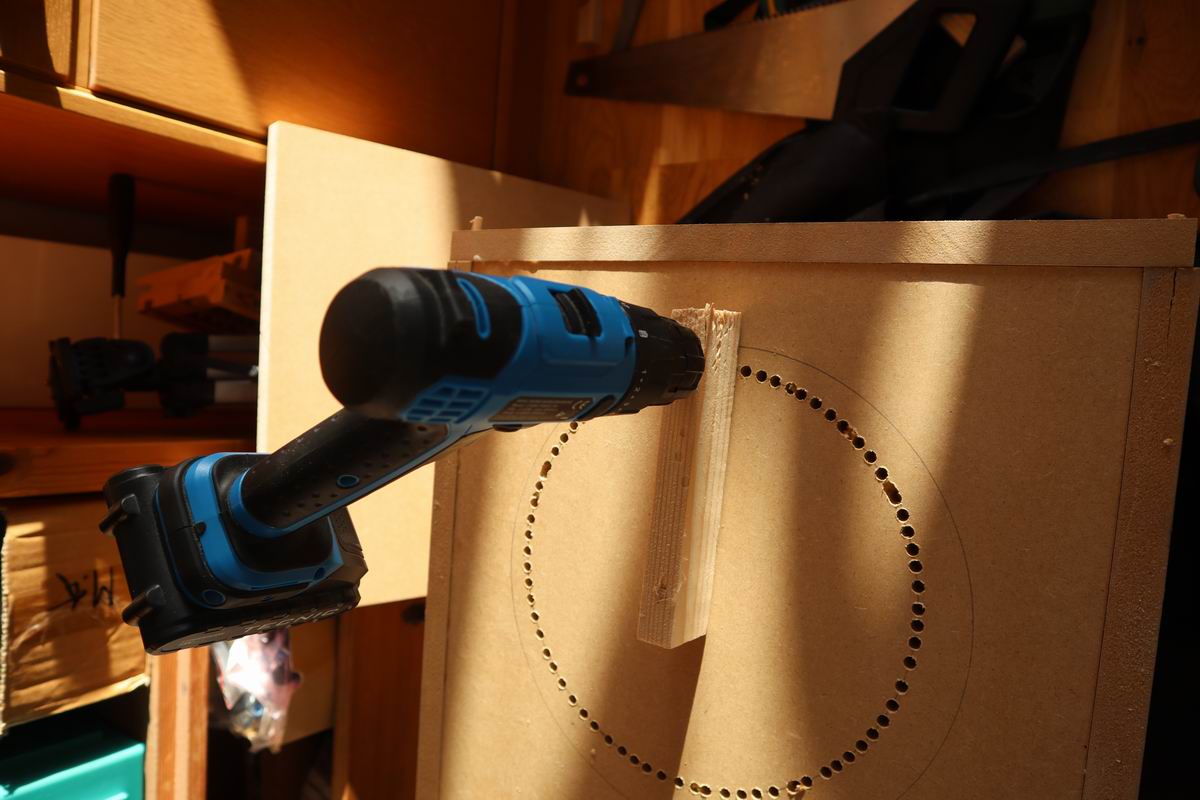Dayton Audio PS95-8 in concrete
When I finally had gotten my un-orthodox speakers in working order, I decided never again to build a pair of speakers.
But the came my mind up with the idea of building a pair of small speakers in concrete, just because ...
So small speakers had to be ... 3-4" full-range drivers?! Like Dayton Audio PS95-8??
They happened to be on sale right now and a pair cost med less than USD 50. The 3 and half inch seemed to be
a pretty good compromise.
First plan was to make a simple mold out of fiber boards, but switched to special paper tubes meant for casting conrete. Picking a 19 cm tube (outer) and a 15 cm (inner) would give me a speaker of reasonable size - 7,7 litres ported box.
However, I am not sure about that volume as it seems to be rather big for that driver. I did see a project where a similar driver and a passive radiator was placed in a 3 litre box (2,7 litres actualle - see links below.)
Started off with ideas to use the kind of goo used to level out concrete floors, but when I heard you could dye concrete I went for fine cement, but have to find out a way to reinforce the concrete. The floor goo came with reinforcing fibres, but I picked up an idea that fiberglass, sipped in pieces and added to the concrete could do the job. I am not building a building the SF Millennium Tower.
IMAGES
My very first sketch, just to undersatand myself how to make the mold. It is all about thinking in reverse - what is
to be cavities and openings must be solid and what is to be solid cast concrete must be cavities ...
A long threaded rod will hold the inner parts in place as it may tend to float.
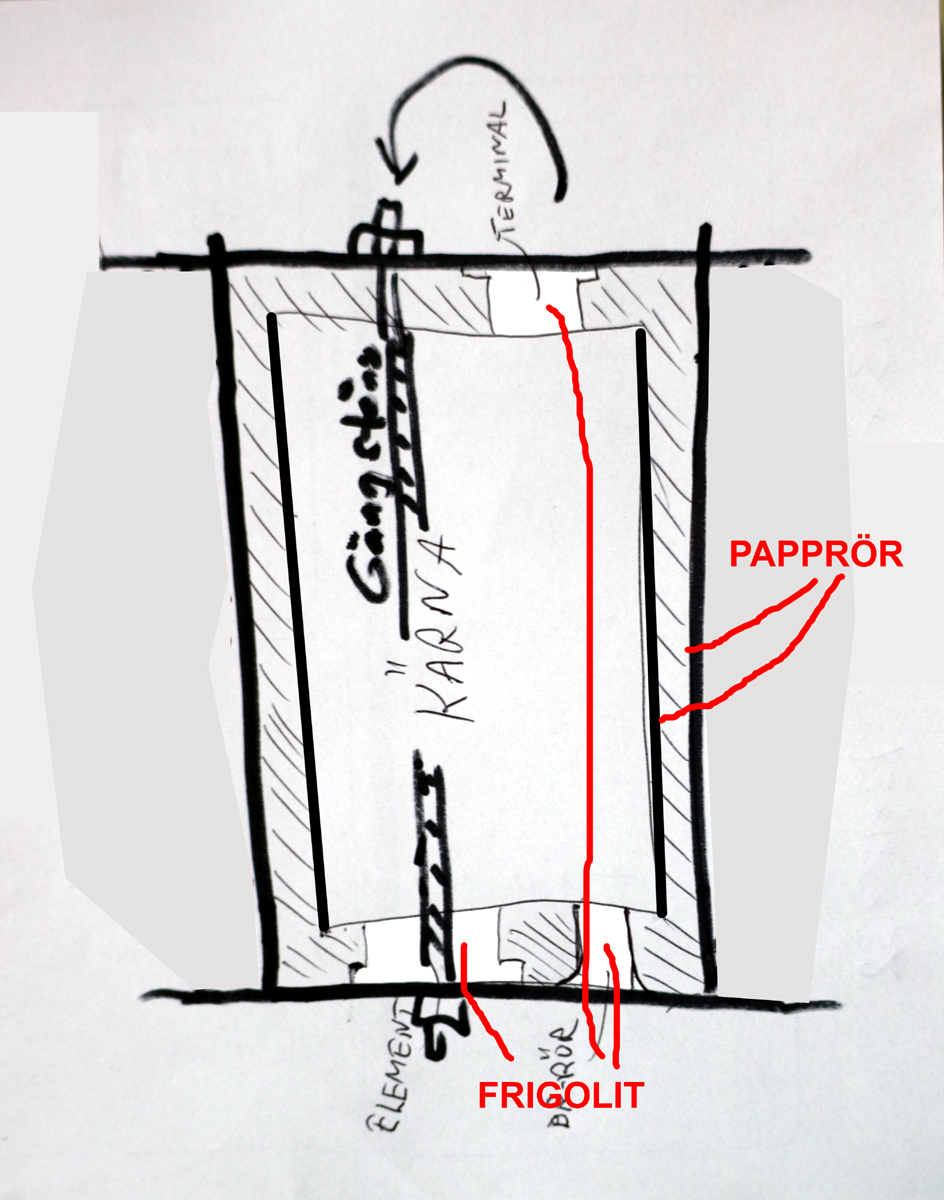
Some fiddling in Illustrator to see if I can fit the driver and the BR tube on the front.
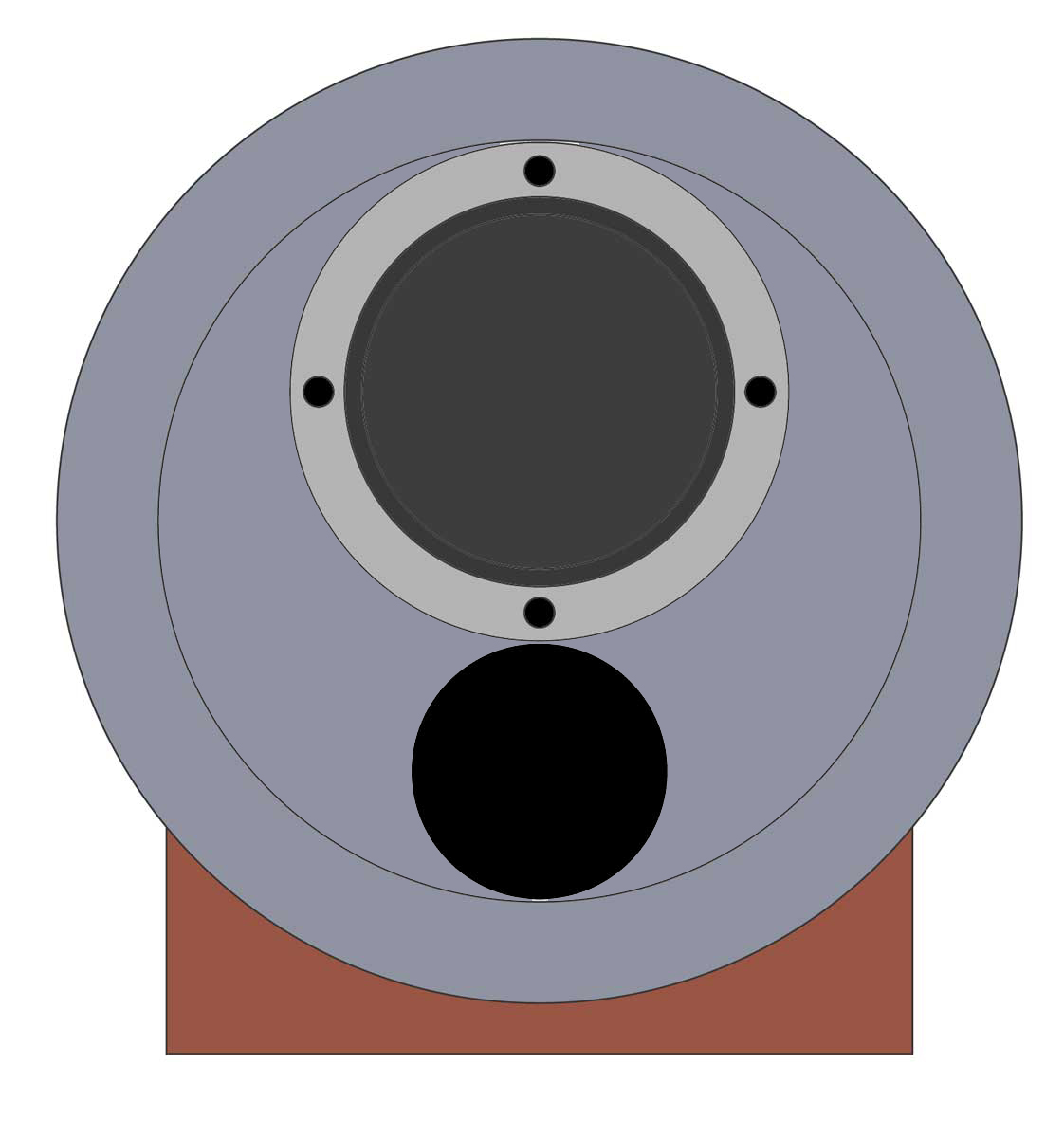
Done my shopping, one tube inside the other, 20 kg of cement, dye, paraffine oil, all loaded in my French armoured car.
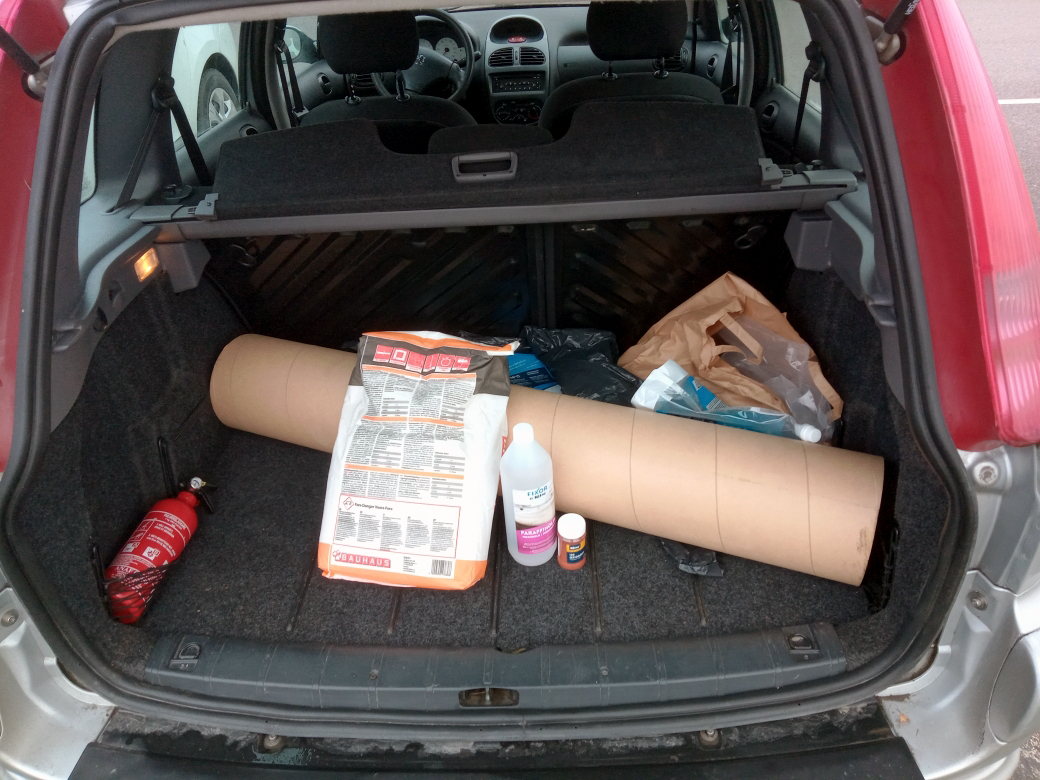
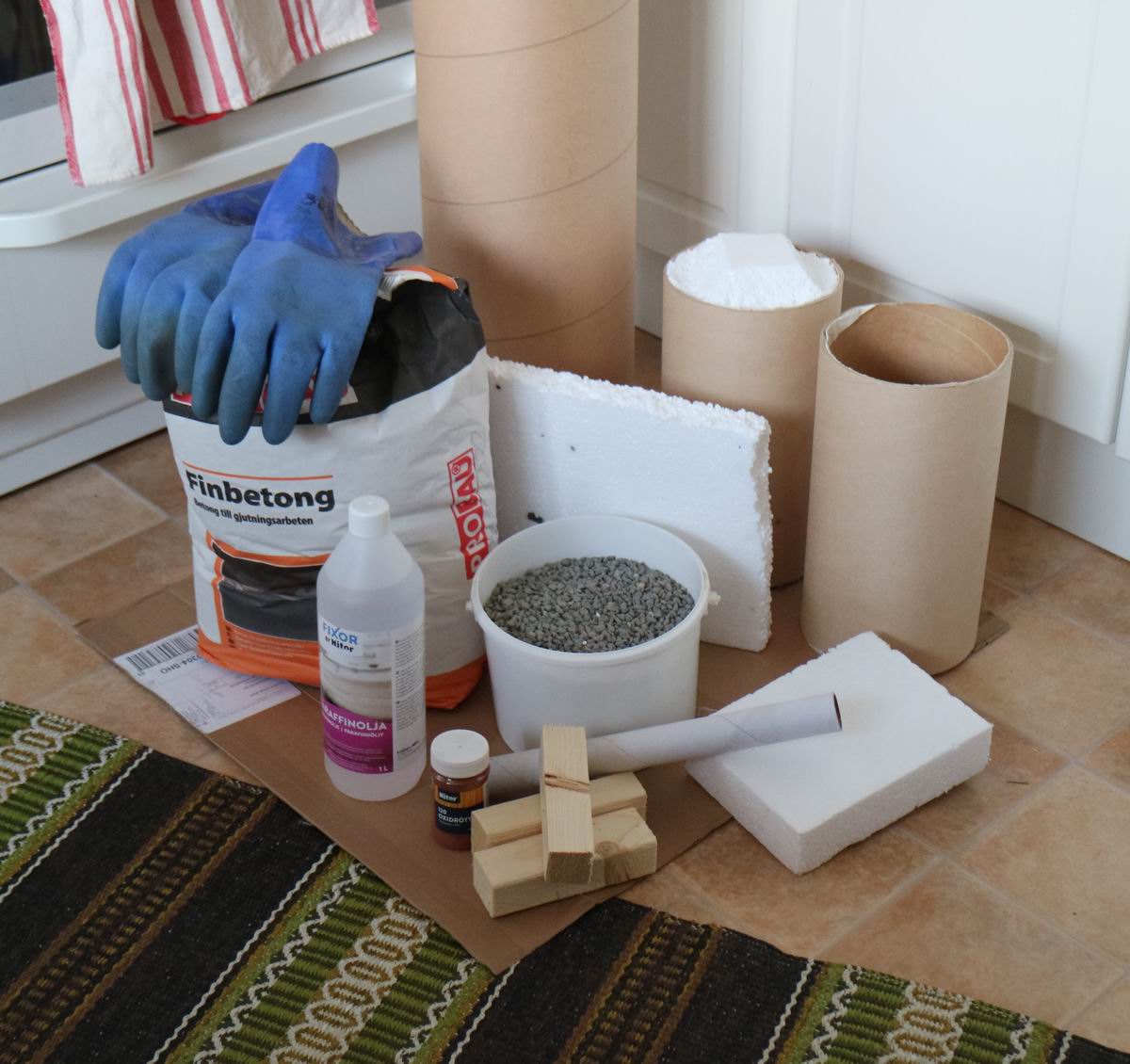
Some pics uploaded for friends on Swedish audio forum. At least I got some loose screws ....
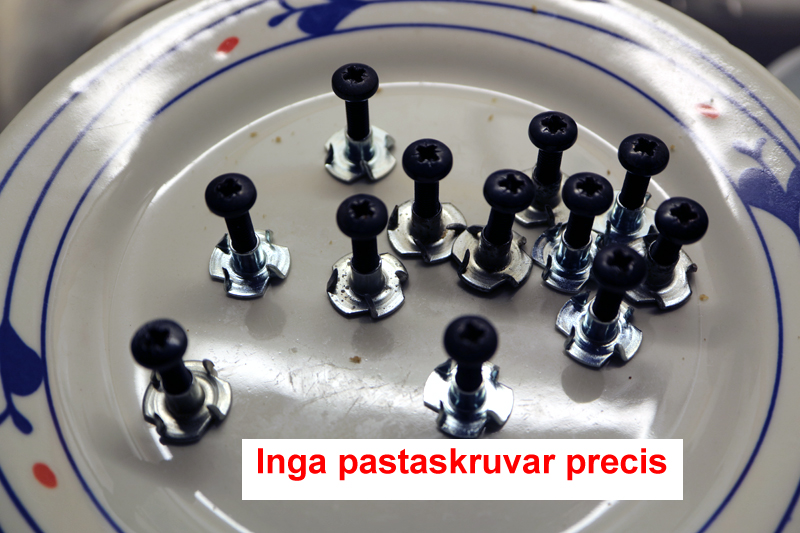
These T-nuts are a menace when working with MDF and I fear the will be a menace when working with concrete so I will fit them onto pieces of sheet metal that will be cast in the concrete, hoping that will fix all problems. Greased bolts will secure the nuts until the concrete has cured.
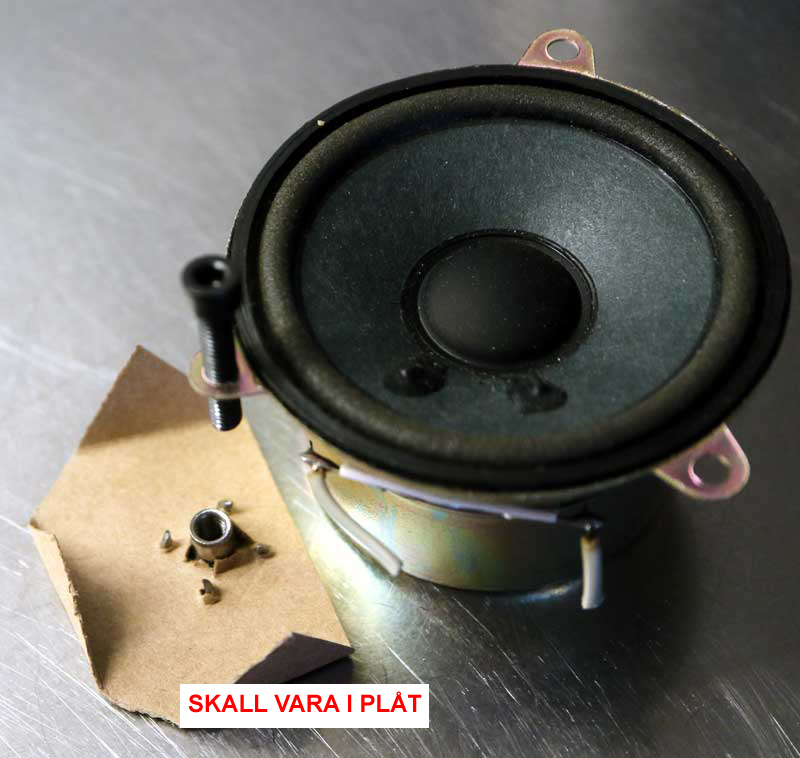
Making the mold. Large paper tube glued to a piece of plywood and the inner part will be made up by the dense isolation material, glued together and wrapped in plastic.
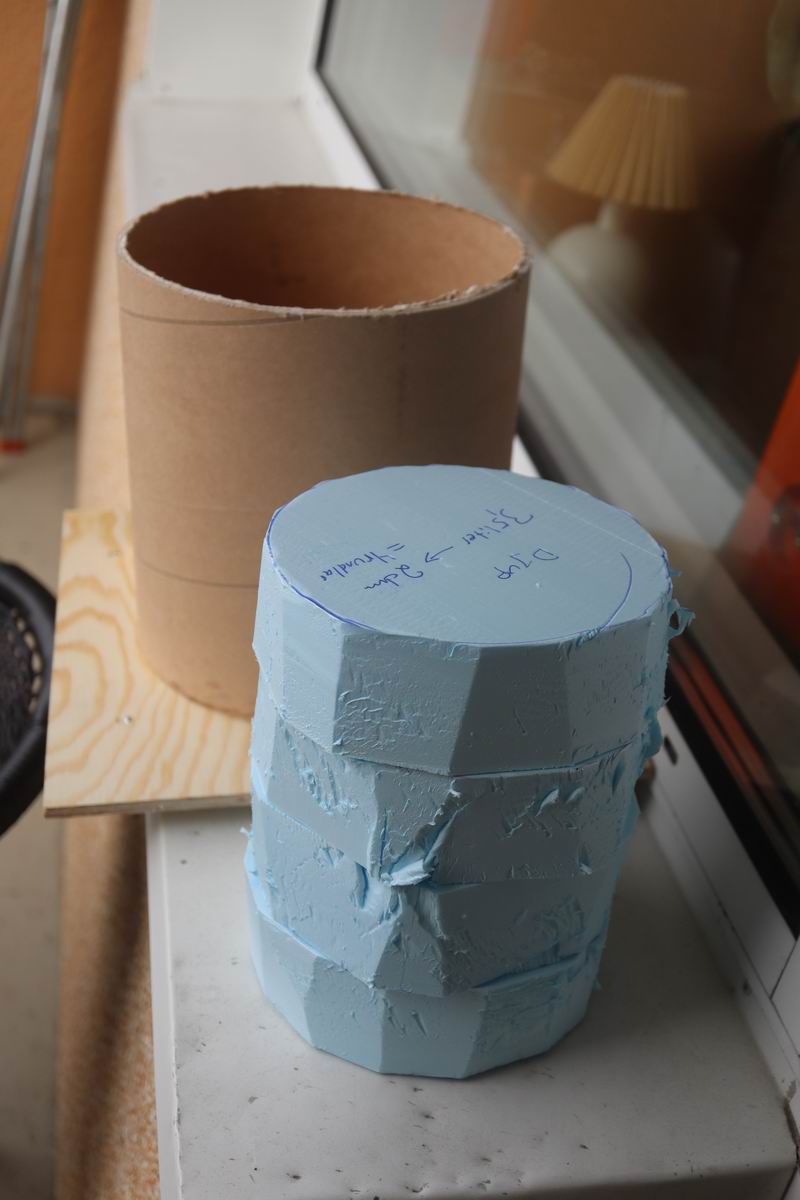
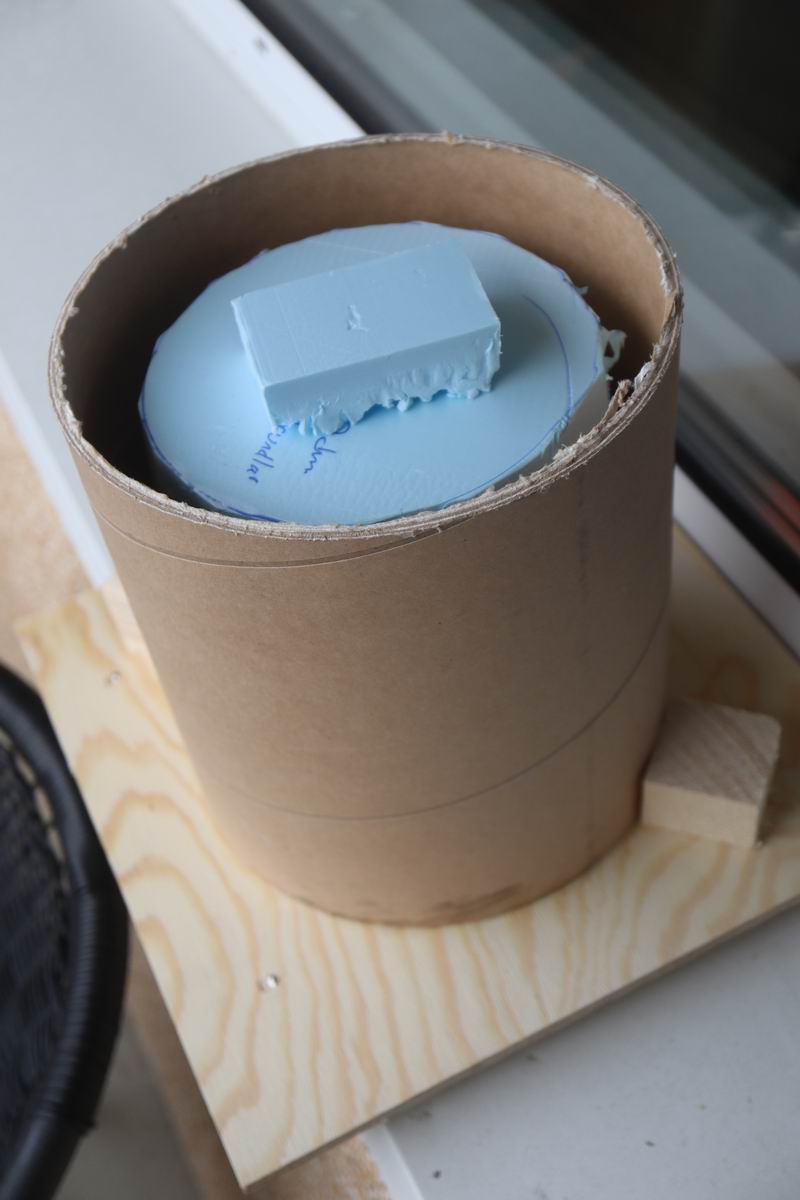
This is the mold for the front. A round and disc cut out to make a recess for the speaker is glued to the plywood and the mold is filled with concrete tinted with special powder colour.
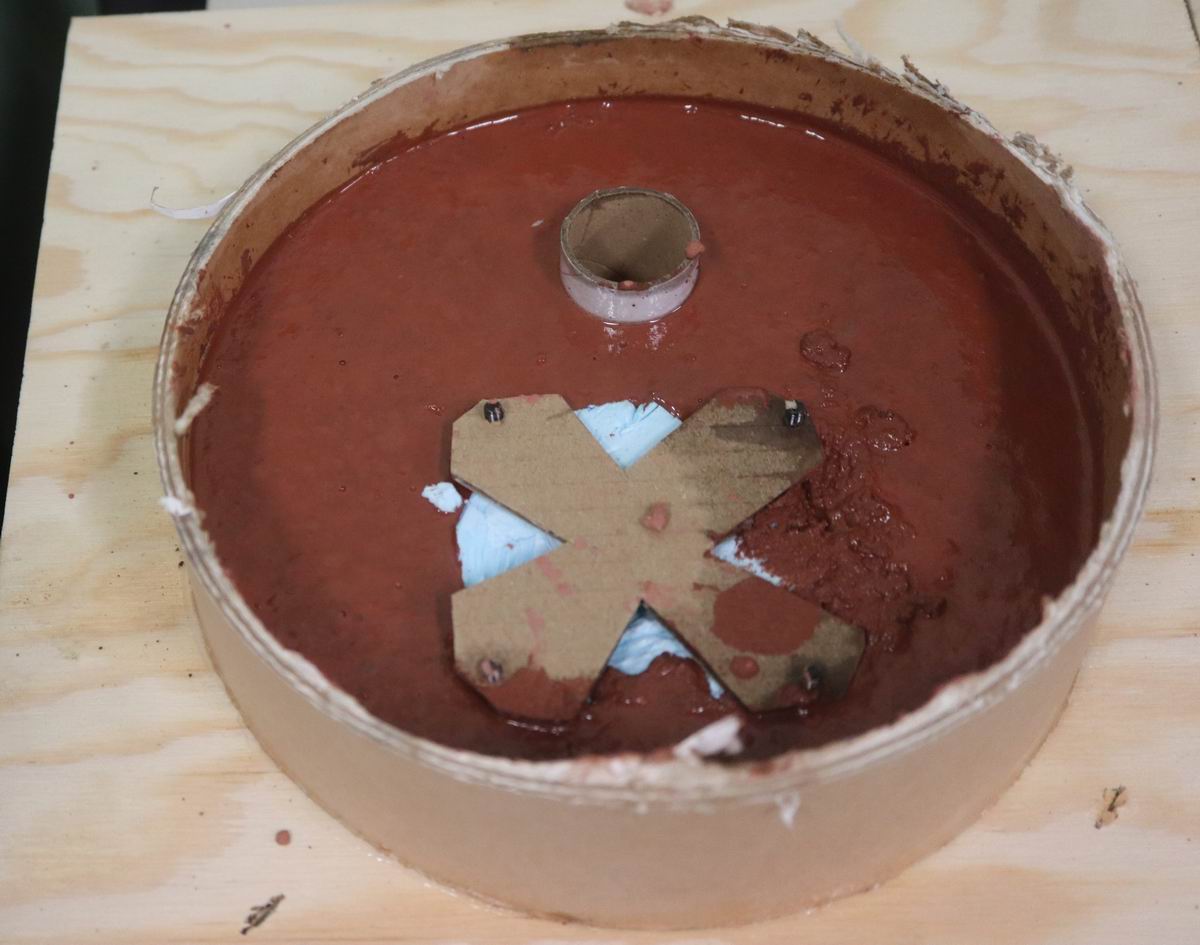
This the the mold for the box, filled with concrete. The T-nuts are hold in place by oiled screws. The blue piece sticking up is where the speaker connector will go. Made a mistake by getting T-nuts in there as well.
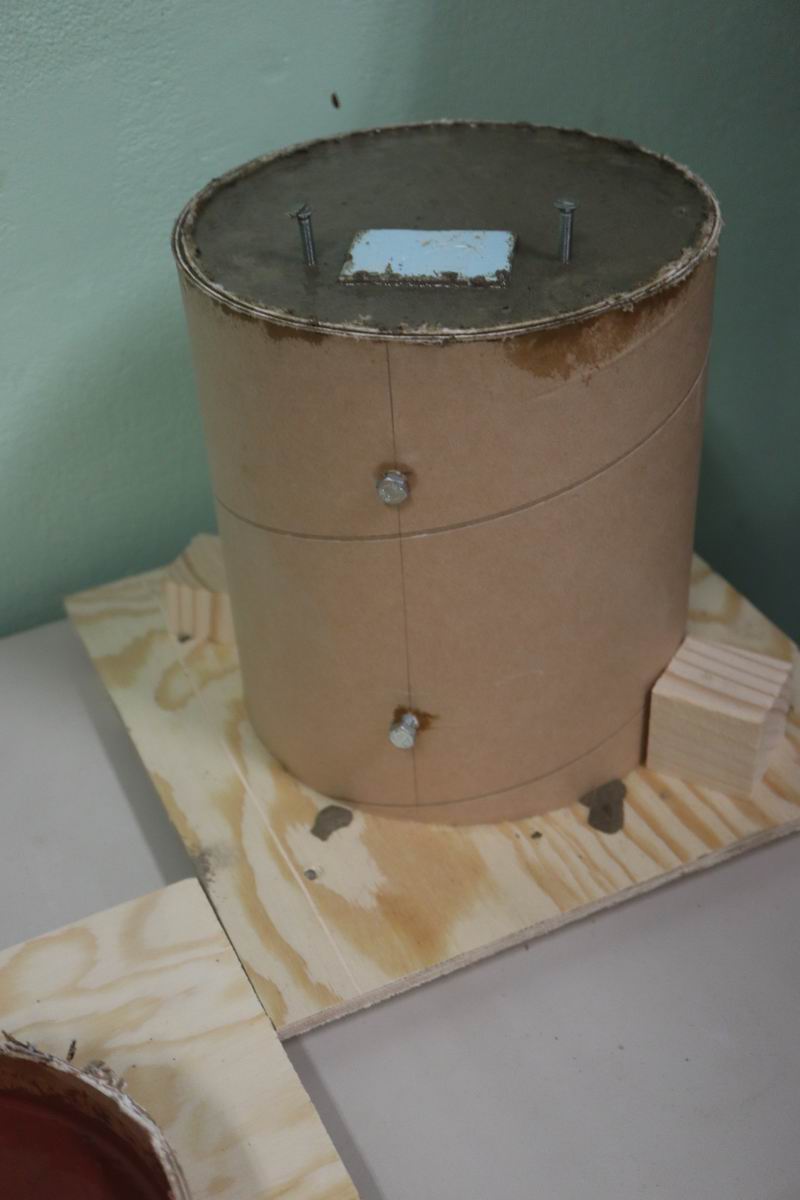
The front removed from the mold. Found that it is a bit tricky to know when to get the concrete out of the molds. Cracking the mold to early and the concrete cracks too, but waiting to long and the concrete has cured to a point where it's very hard to work on it.
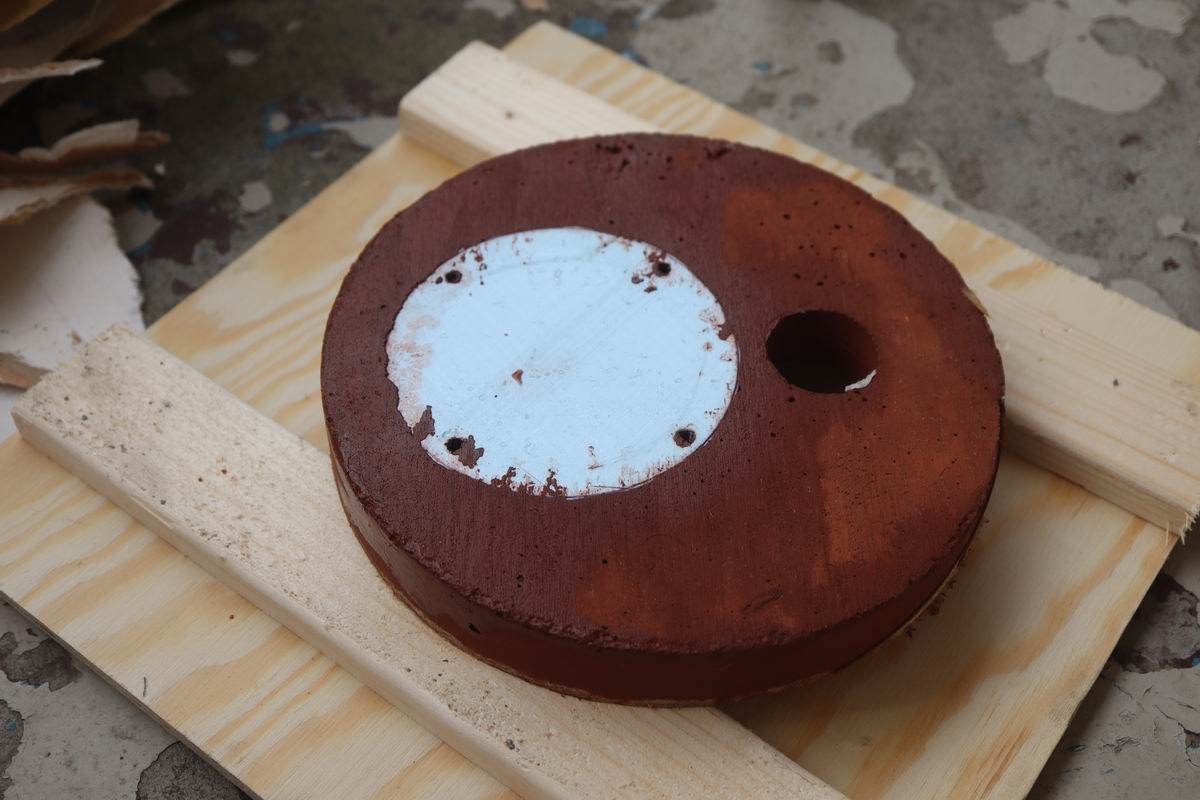
I worked on the pieces with sanding paper to get the surfaces clean and removing any blemishes and bumps. Here I made a dry rand and managed to enlarge the hole for the speaker to fit in the recess.
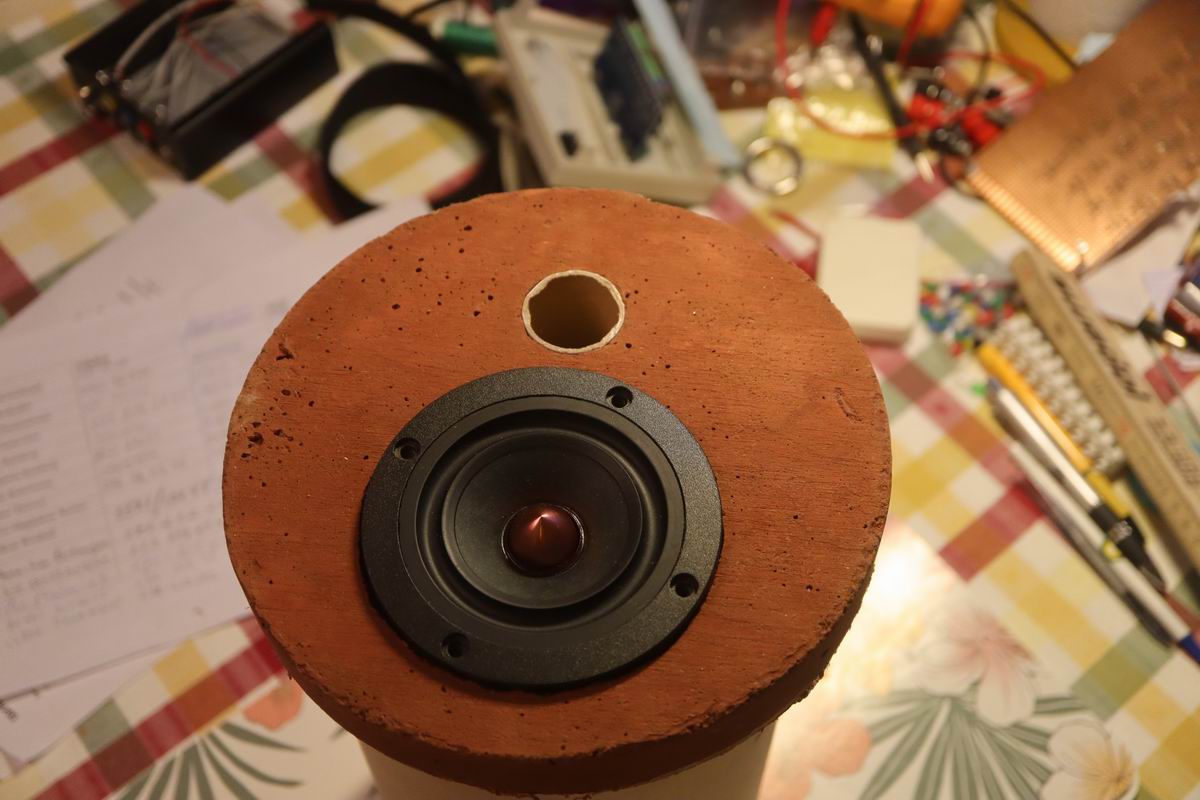
Here's second speaker "box". The first one was made at a concrete crash course with a group of ladies making concrete angels and
candle holders. The second was made on my balcony.
Why one green and one red? Simple - to keep track of right and left channel, or using the naval colours and nominations:
starboard (GREEN) and port (RED).
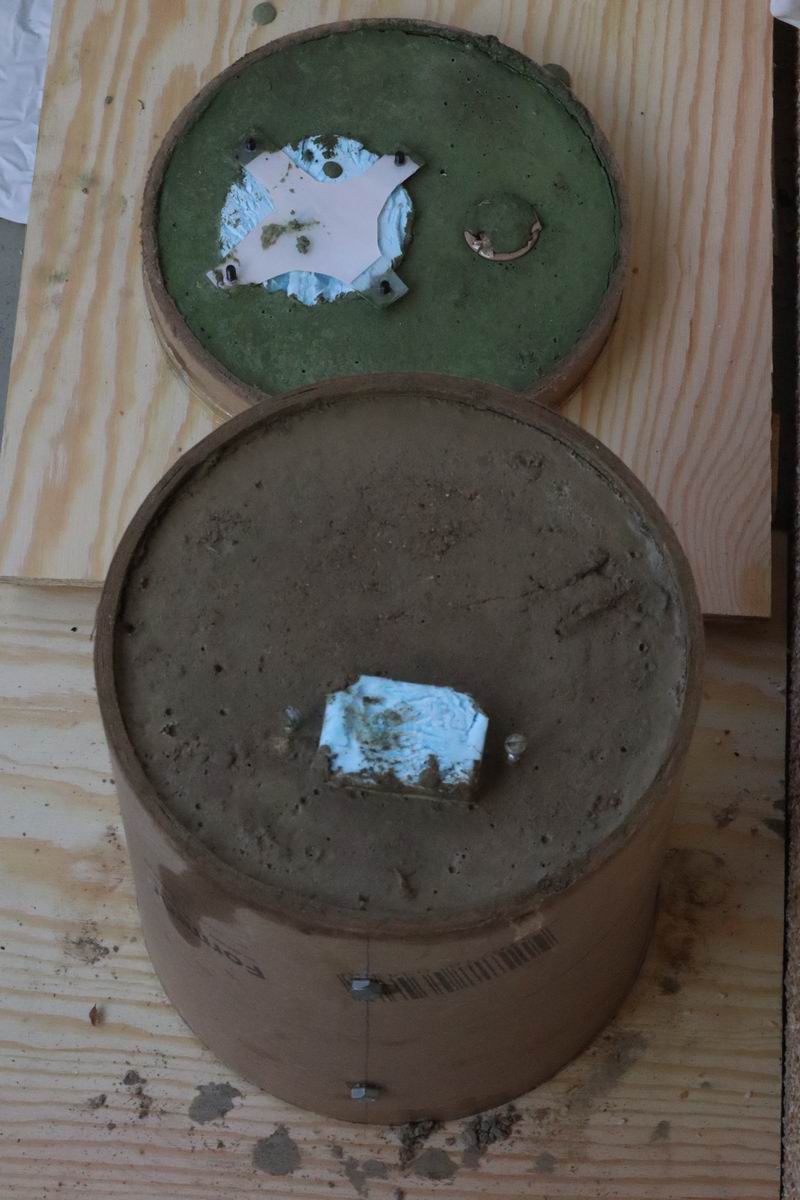
Don't do this at home. I bought a small bottle of acetone and poured into the plastic filling and could easily remove it. I did this, however, on the balcony.
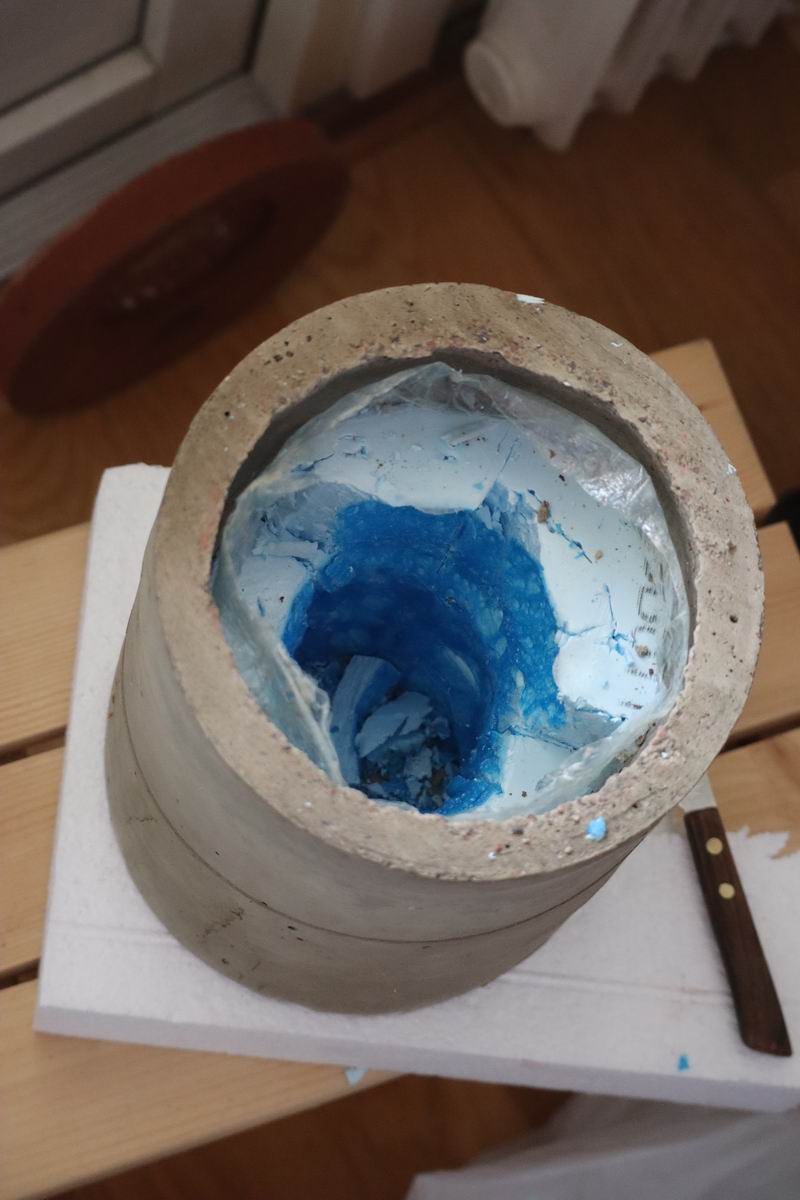
Both "boxes" ready. The green front looks very much different from the red one but I suspect it's because I used generous amount of oil for the mold.
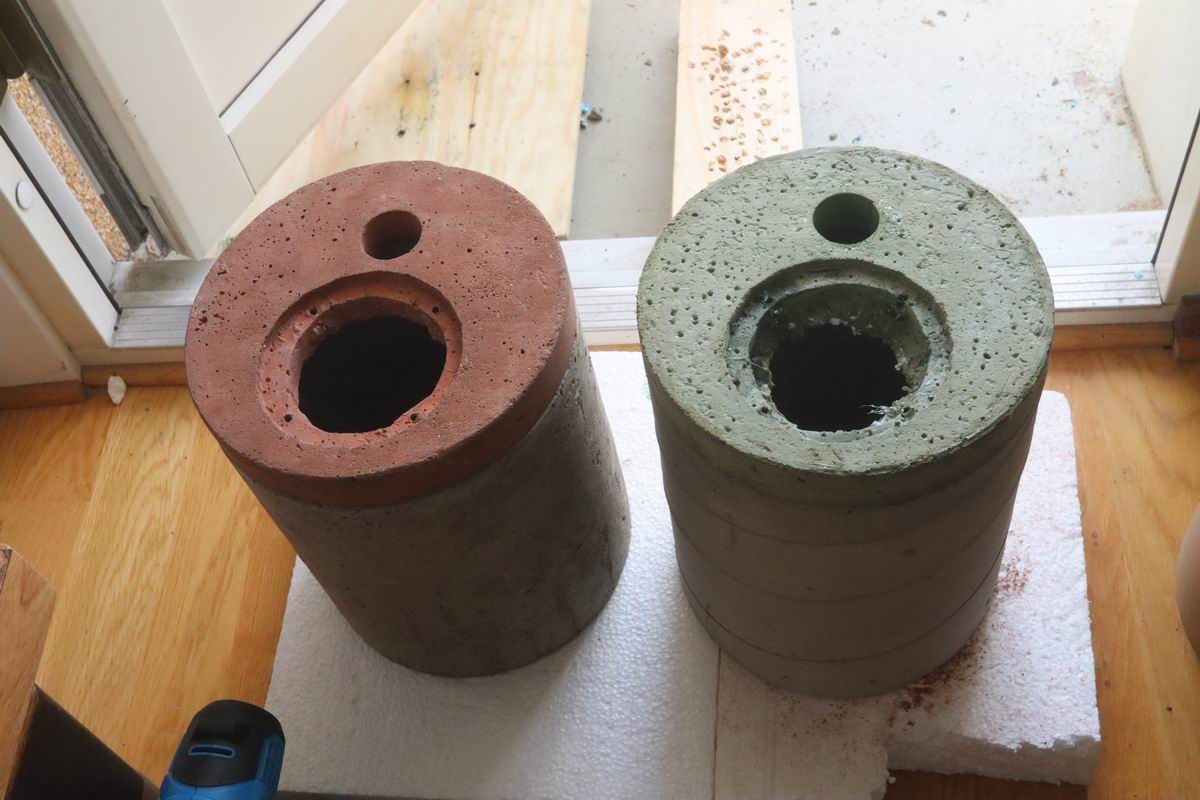
The speaker connector on a piece of plastic, carpet tape and screws.
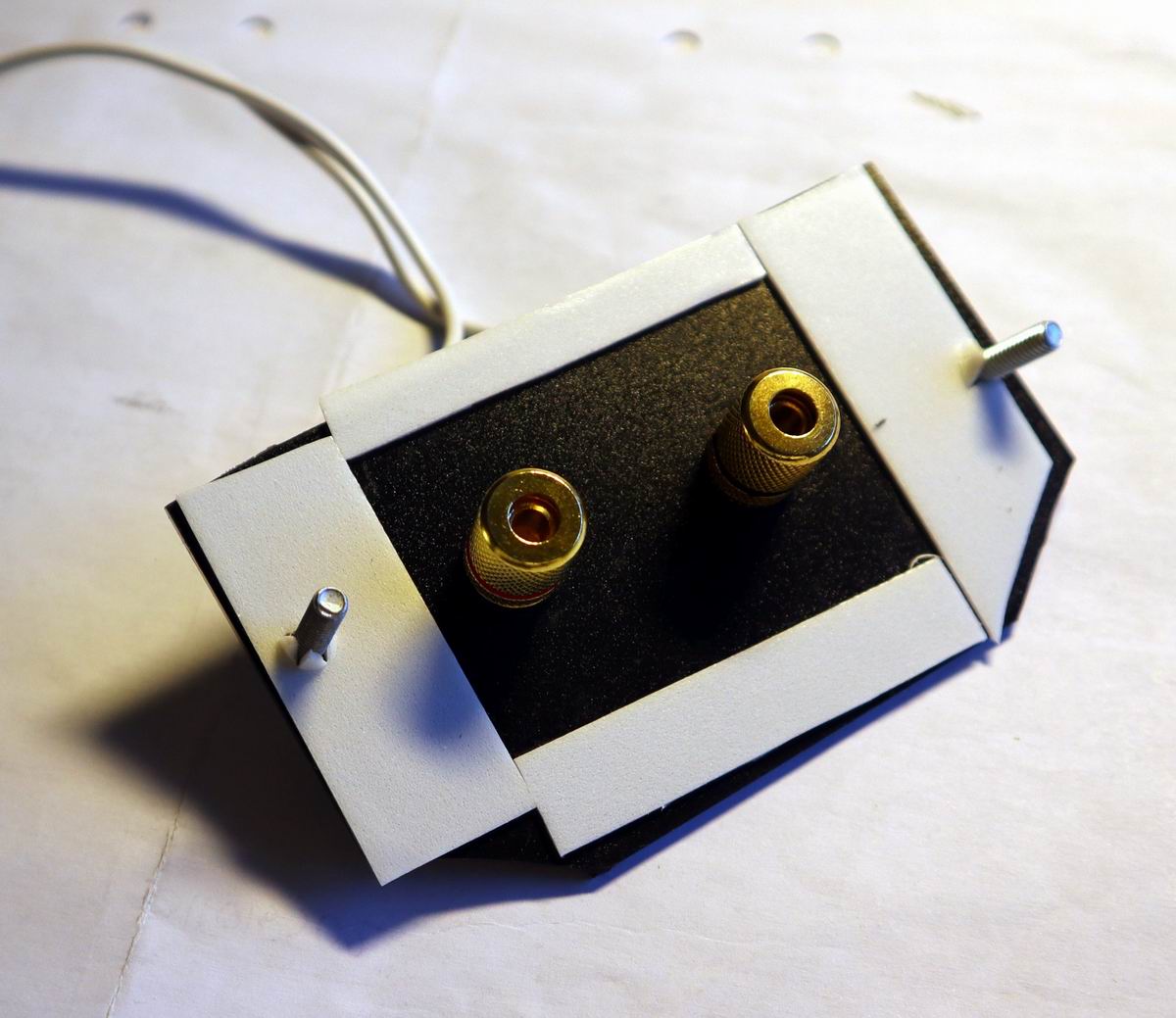
Front glued to the box or shall we say tube? I have used wax to treat the concrete, giving it a shine and stopping it from dusting.
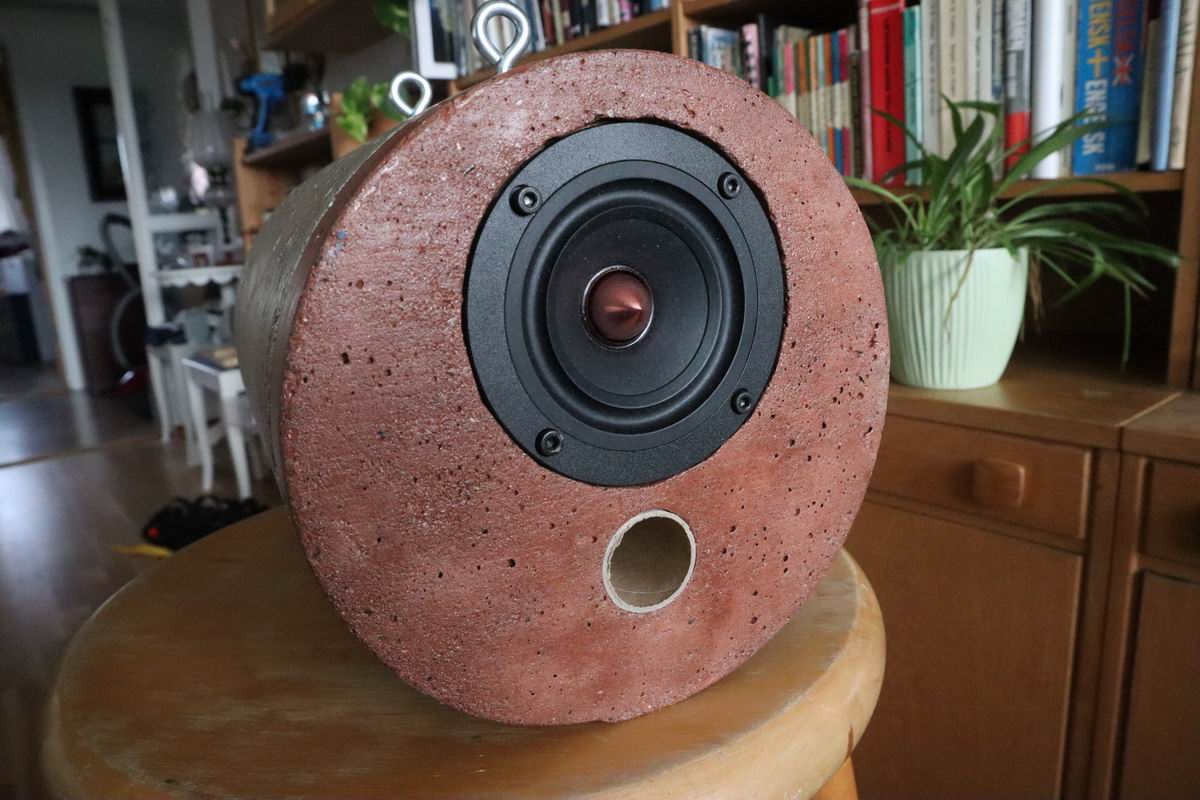
Someone suggested me to hand the speakers from the ceiling and that could be a good idea.
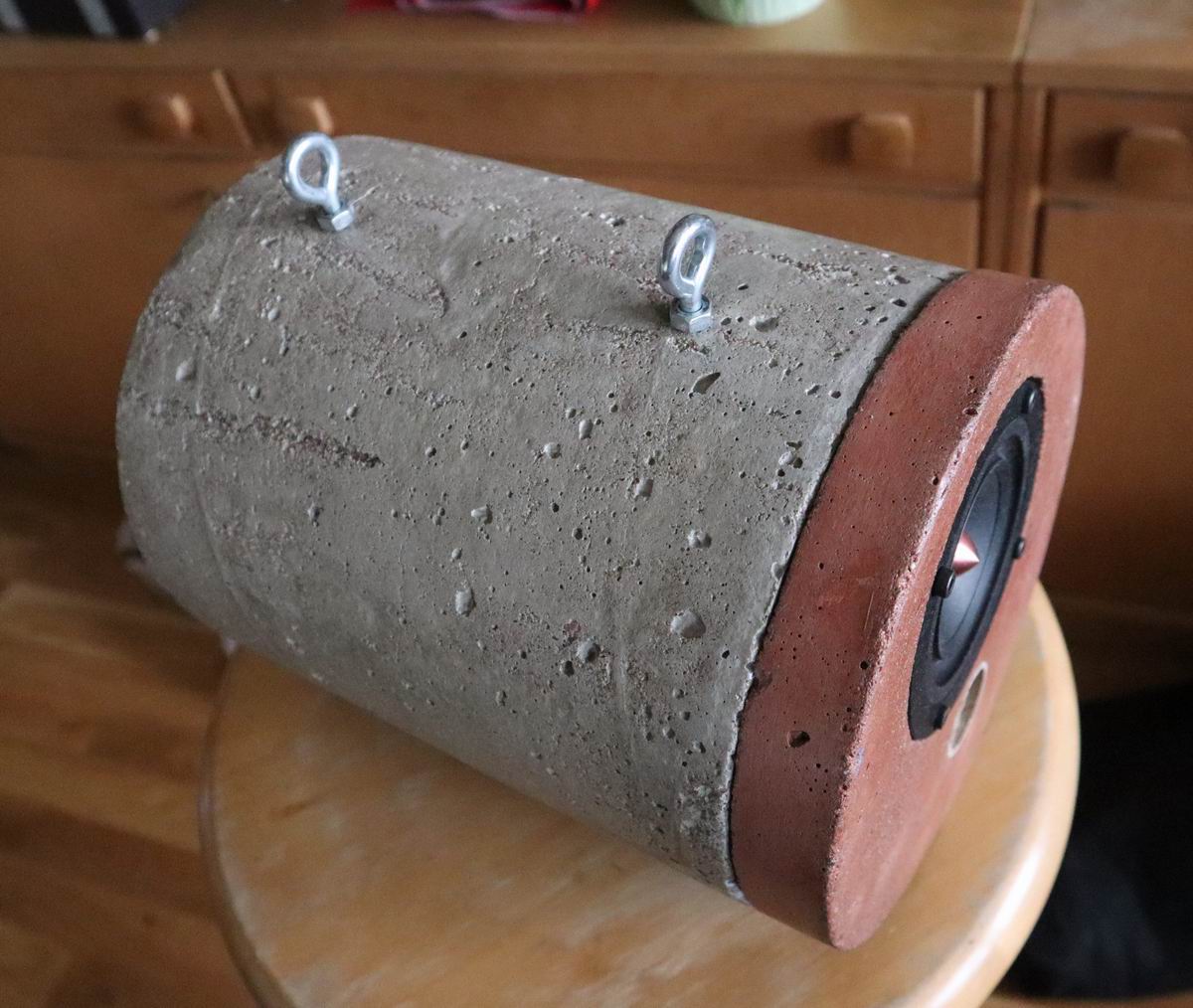
The backside - nothing fancy.
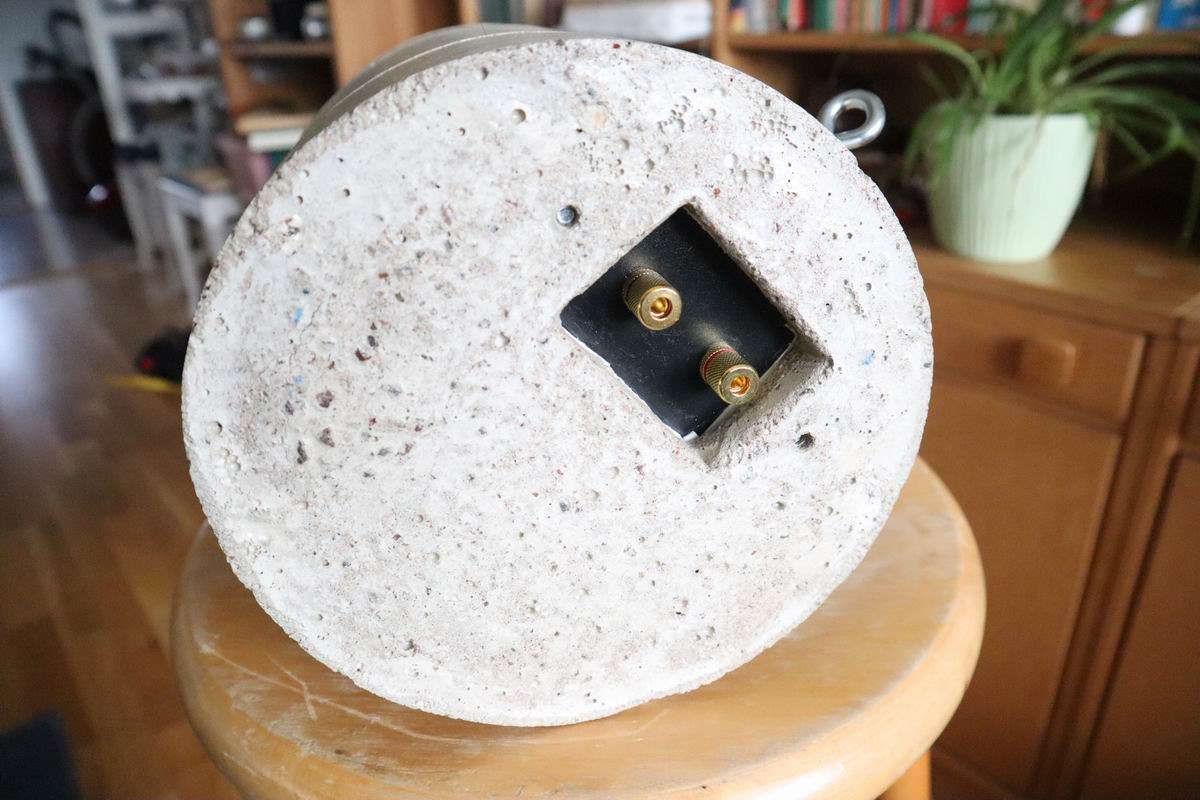
Actually for a different project, I had to build a 45 litre box for a sub. Got hold of the last Dayton Auto DC-250 10" woofer in Sweden.
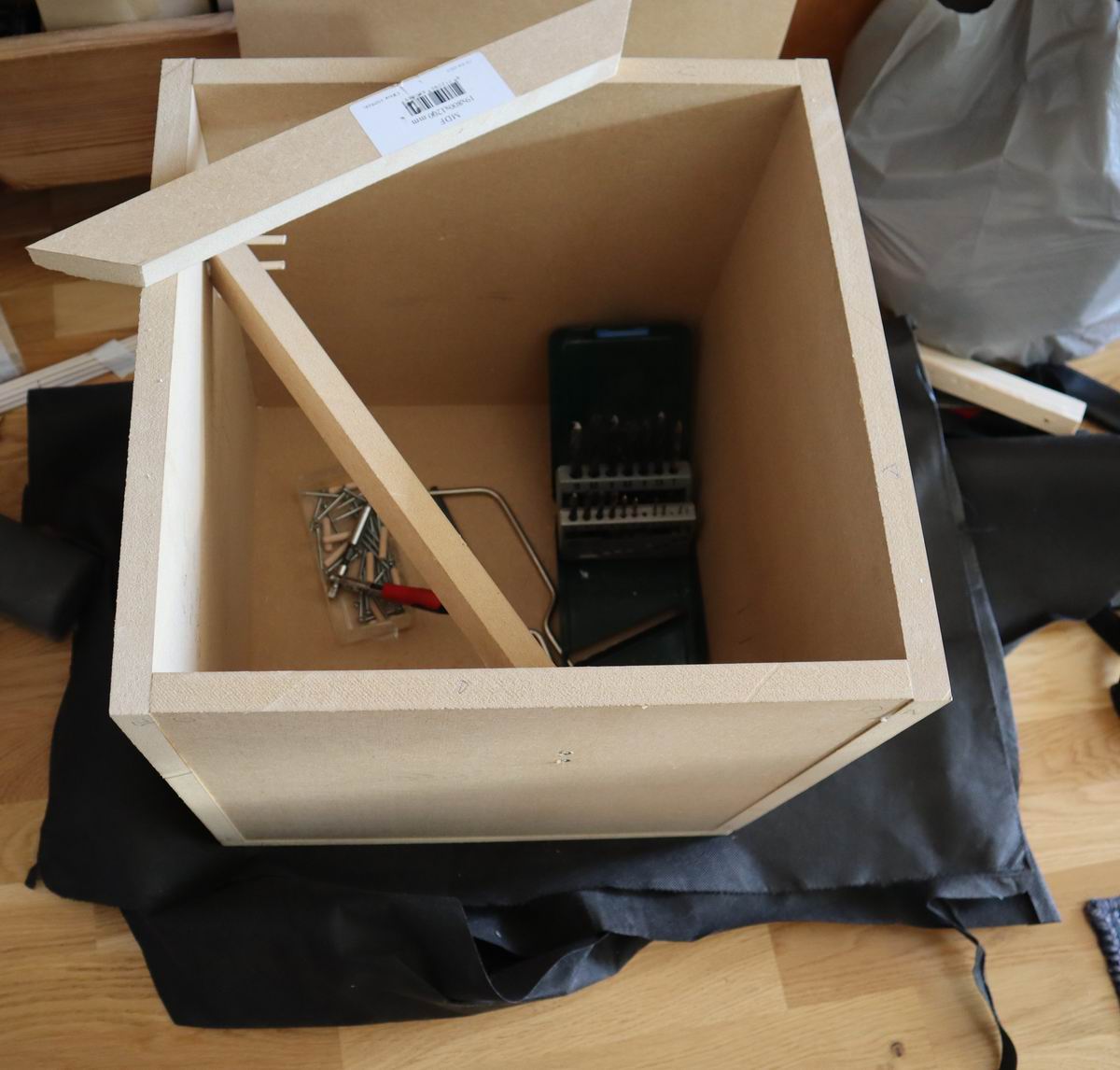
Drilling holes in my living room ...
